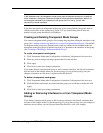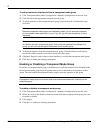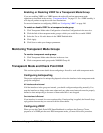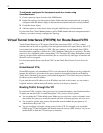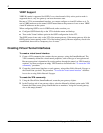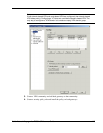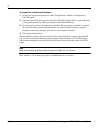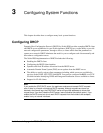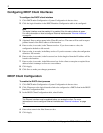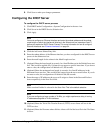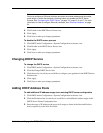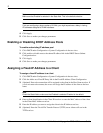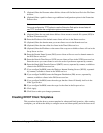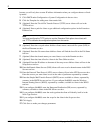
Nokia Network Voyager for IPSO 4.0 Reference Guide 145
3 Configuring System Functions
This chapter describes how to configure many basic system functions.
Configuring DHCP
Dynamic Host Configuration Protocol (DHCP) for Nokia IPSO provides complete DHCP client
and DHCP server capabilities for your Nokia appliance. DHCP gives you the ability to provide
network configuration parameters, through a server, to clients which need the parameters to
operate on a network. DHCP eliminates the need for you to configure each client manually and
thus reduces configuration errors.
The Nokia IPSO implementation of DHCP includes the following:
Enabling the DHCP client
Configuring the DHCP client interface
Dynamic and fixed IP address allocation from the DHCP server.
Automatic Domain Name System (DNS) server updates from the DHCP server.
The ability to specify various client parameters including which servers are available for
services such as DNS, NTP, TFTP, and SMTP. You can also configure NetBIOS over TCP/
IP which includes identifying WINS and Datagram Distribution servers available to clients.
Support for VLAN clients.
Note
If you enable the IPSO DHCP server, the appliance receives and accepts DHCP requests
even if there is a firewall rule blocking DHCP requests. Although requests are shown as
blocked in the firewall logs, the IPSO DHCP server still provides addresses to clients that
request them. If you don’t need the DHCP server, leave it disabled (the default option). If you
enable the DHCP server but do not want DHCP requests from the outside to be accepted,
enable it only on internal interfaces.



